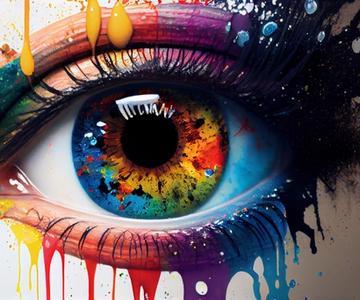The Psychology of Color Theory in B2B Marketing: How Hues Influence Emotions and Drive Decisions
Colors do more than just paint a pretty picture; they speak a silent language that profoundly impacts our emotions, perceptions, and ultimately, our decisions. This is particularly crucial in marketing, where the right color choices can make the difference between a brand that blends into the background and one that captures attention and inspires action.
Let's dive into the fascinating psychology of color theory and explore how it can be leveraged to elevate your marketing efforts.
#### Color's Impact on Emotions and Decision-Making
Colors have the ability to tap into our subconscious, triggering specific emotions and associations. For instance:
**Red:** Evokes excitement, urgency, and passion. It's often used in sales promotions and to draw attention.
**Blue:** Conveys trust, tranquility, and reliability. It's a popular choice for financial institutions and tech companies.
**Green:** Symbolizes growth, nature, and harmony. It's commonly associated with health and wellness brands.
**Yellow:** Represents optimism, warmth, and creativity. It's often used to grab attention and evoke cheerful feelings.
Understanding these associations empowers marketers to create campaigns that resonate on an emotional level, fostering connections with their target audience and influencing their decision-making process.
#### B2B Brands Leveraging Color Psychology
Even in the B2B world, color plays a crucial role in shaping brand perception and influencing buying decisions. Here are a few examples of successful color implementation:
**Oracle (Red):** The software giant uses red to highlight creativity, passion, and cutting-edge technology.
**Salesforce (Blue):** The predominant use of blue conveys trust, stability, and professionalism, reflecting Salesforce's commitment to providing reliable CRM solutions.
**Deloitte (Green):** The use of green symbolizes growth, innovation, and sustainability, aligning with Deloitte's focus on helping businesses thrive in a responsible manner.
**Caterpillar (Yellow):** Caterpillar's signature yellow evokes energy, optimism, and resilience, characteristics associated with their heavy machinery and equipment.
**Goldman Sachs (Black & White):** Projects an air of sophistication, power, and exclusivity.
#### Yo Marketing Can Help
At Yo Marketing, we work with B2B brands across industries harnessing the power of color psychology to create marketing campaigns that resonate with your audience and drive results.
We can help you:
**Develop a cohesive brand color palette:** Select colors that accurately reflect your brand identity and resonate with your target market.
**Design visually appealing marketing materials:** Create eye-catching designs that leverage color to capture attention and convey your message effectively.
**Optimize your online presence:** Ensure your website and social media channels use color strategically to enhance user experience and encourage conversions.
Color is a powerful tool that can elevate your marketing efforts from good to great. Contact Yo Marketing today to discover how we can help you harness the psychology of color to achieve your business objectives.
[](/contact/)


























